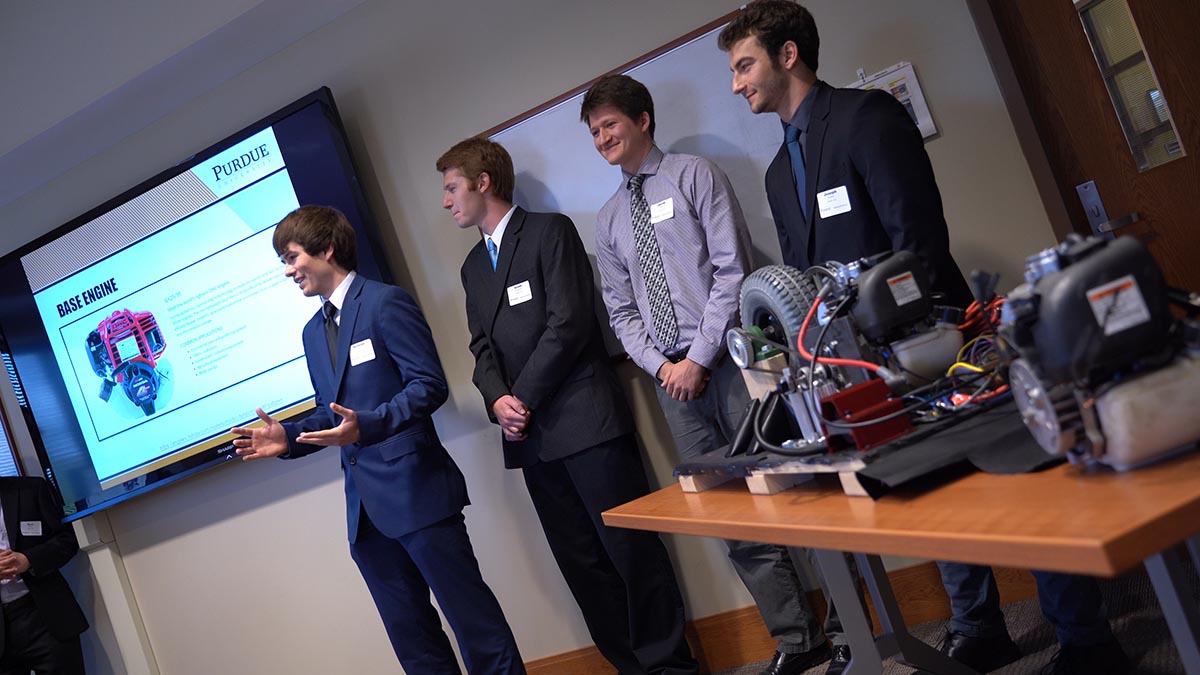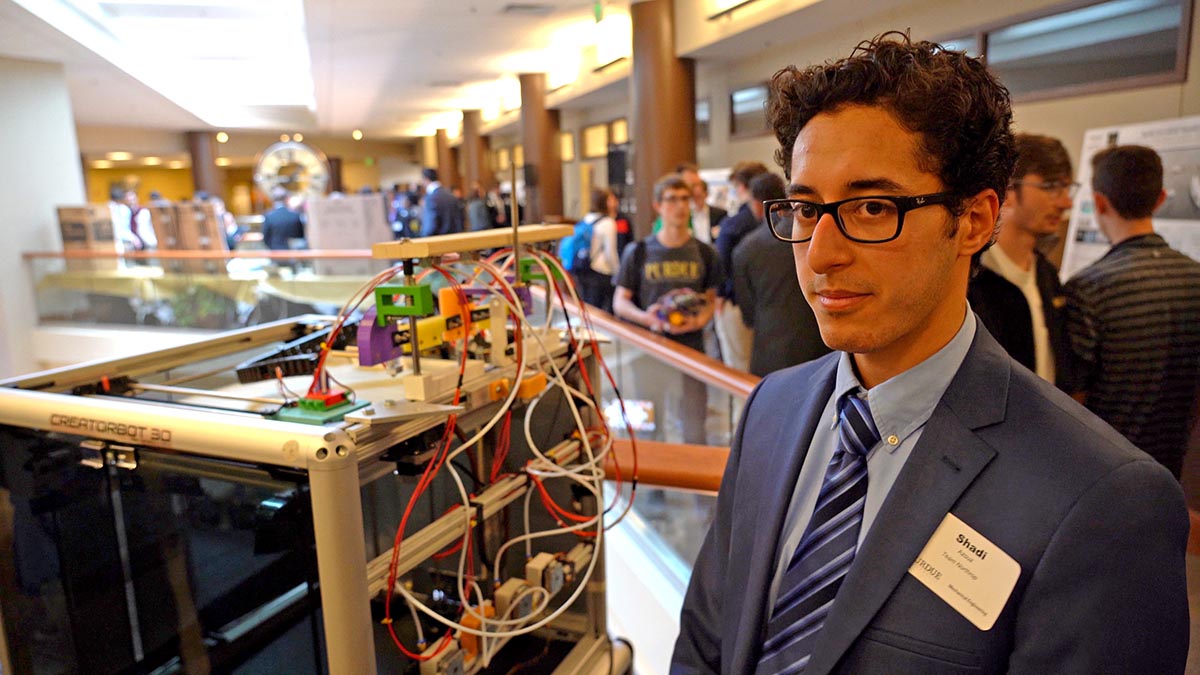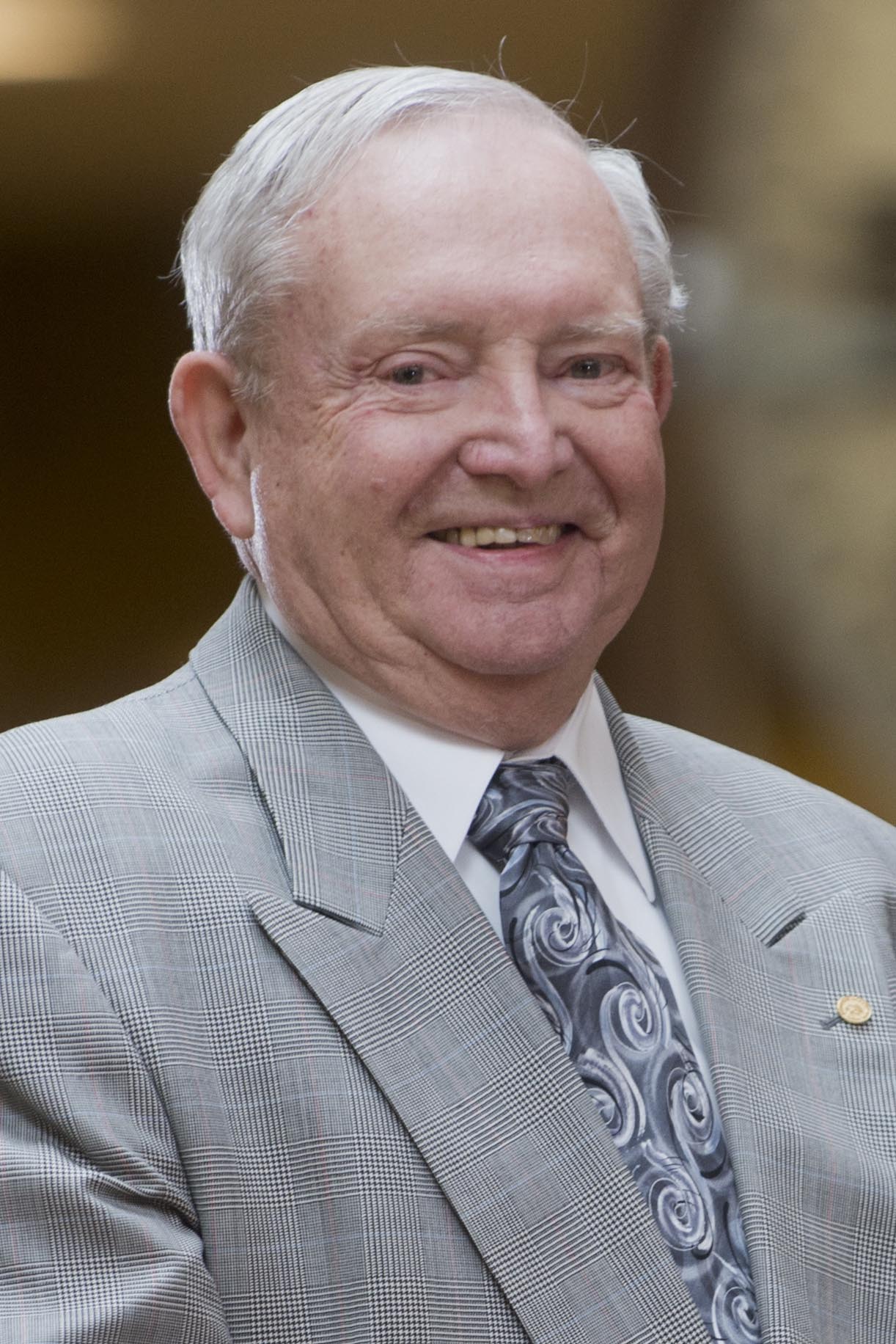Malott Innovation Awards showcase 2019 senior design projects
The Malott Innovation Awards are the culmination of ME463, Purdue's capstone class for seniors in Mechanical Engineering. Teams of students work closely with faculty members and industry partners to create prototype products, continually refining and improving them using the knowledge from their engineering courses over the last four years. At the end of the semester, the students present their final prototypes to a panel of Purdue ME alumni who work in various industries; this panel selects the award winning teams.
The top teams from the Spring 2019 Malott Innovation Awards are:

1st place: Electric ICE, Nicholas Firsich, Grant Sondgeroth, Ryan Kissane, Jacob Mock, Samuel Sills, Joseph Gervasio. Four-stroke internal combustion engines only produce power during one stroke, with some of this energy being used to complete the other 75% of the cycle. The low efficiency of ICE vehicles in the market results in high fuel consumption and costs to the consumer. In order to counteract the losses, an electronic solenoid surrounding the cylinder can use magnetism to help propel the piston through the three strokes where power is not produced. This creates an integrated hybrid system using an auxiliary electrical power supply. The electricity used by the solenoid replaces a portion of the fuel required for combustion. Solenoid engines require additional electrical components for the hybrid system but result in decreased use of fossil fuels and a smaller carbon footprint over the lifespan of the engine.

2nd place: QUESTINOS, Brandon Franz, Alex Gebhardt, Paul Mullin, Michaela Lewis, Matt Eagon, Nate Walk. Lava tubes are postulated to exist beneath the surface of the Moon. These tubes may be able to shield human inhabitants from the lethal radiation and temperature fluctuations found at the surface. However, very little is known about these formations; formal testing is required to assess the environment within the tubes (e.g. size, terrain, radiation levels, structural stability). Team Q.U.E.S.T.I.N.O.S. proposed to design an autonomous lunar vehicle capable of navigating and mapping the lava tubes in order to gather data on the unknown area. Requirements for this rover include navigating rugged terrain using simultaneous localization and mapping to create a visual map of the space. This is accomplished using an adjustable rocker-bogie system for suspension, Ackermann steering geometry, a roll cage, lidar autonomous navigation capabilities, and a control system capable of determining navigable terrain.

3rd place: Intelli-foot, Matthew Lyng, Jarred Mudd, Mark Peterson, Julie Puckett, Urjayant Sangai, Lillian Steiner. Intelli-Foot is creating an innovative process to develop custom shoe inserts for partial foot amputees that fully restore their footprint and stability. This innovative insert design method allows engineering technologies, such as 3D scanning and printing, to be used in conjunction with new, cutting-edge materials to offer a more comfortable and functional insert for patients with missing anatomy or particularly sensitive tissue. Ultimately, this insert design will prevent the formation of ulcers, which is especially important for diabetic patients. The most innovative aspect of the design is the integration of sensor technology, which will record the pressure distribution a patient experiences during use. Real-time feedback from sensors allows for adjustments to be made to the insert to better protect against ulceration and pronation/supination and truly be custom fit for the individual.

Engineering Excellence Award: Team Northrop, Zack Witkowski, Nishad Damle, Mukul Sawant, Shadi Azouz, Akash Veerlakashmanan, Atharva Hans. Currently the 3D printing industry has the capability to print only with one type of material for a single build cycle. There are no options of changing extruders mid-print to enable multi material printing. The objective of this Northrop Grumman sponsored project is to implement a mechanism that enables changing of 3D printer heads to enable 3D printing with different materials in the same build cycle. The first part of the project involves designing/manufacturing a lifting mechanism that replaces printer heads. The second part of the project involves developing a software to integrate this mechanism into the working code of the 3D printer.
 About the Malott Innovation Awards
About the Malott Innovation Awards
The Malott Innovation Awards are supported by an endowment created in 2007 by Thomas J. Malott (BSME '62, HDR '02), to foster an innovation culture among Purdue Mechanical Engineering students. Malott is the former president, CEO and director of Siemens Energy and Automation. His career included executive positions with Parker-Hannifin and the Ransburg Corp., as well as serving on several corporate boards. He was an inaugural member of the Purdue Foundation Development Council and was awarded the Outstanding Mechanical Engineer and Distinguished Engineering Alumnus awards in 1991 from the university.
Writer: Jared Pike, jaredpike@purdue.edu, 765-496-0374
Source: Greg Jensen, jensen23@purdue.edu, 765-496-0214
